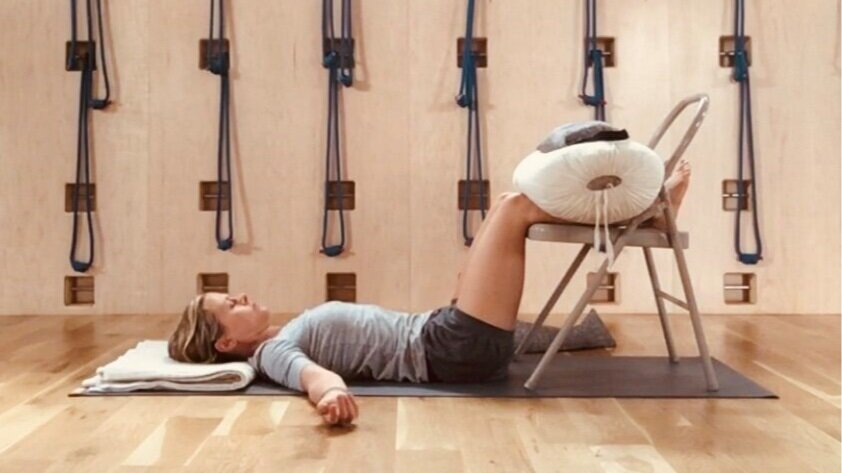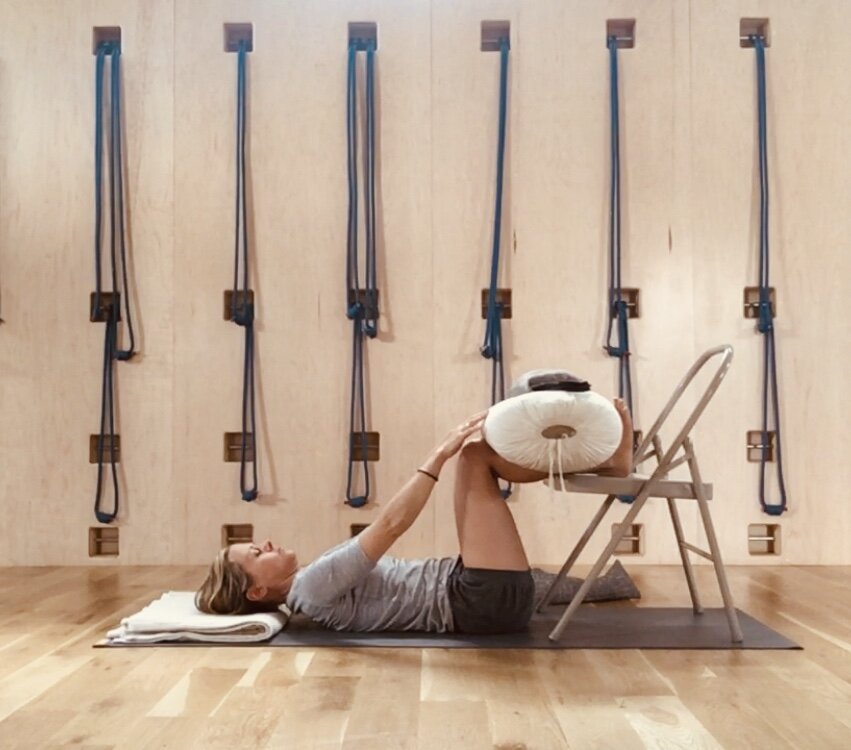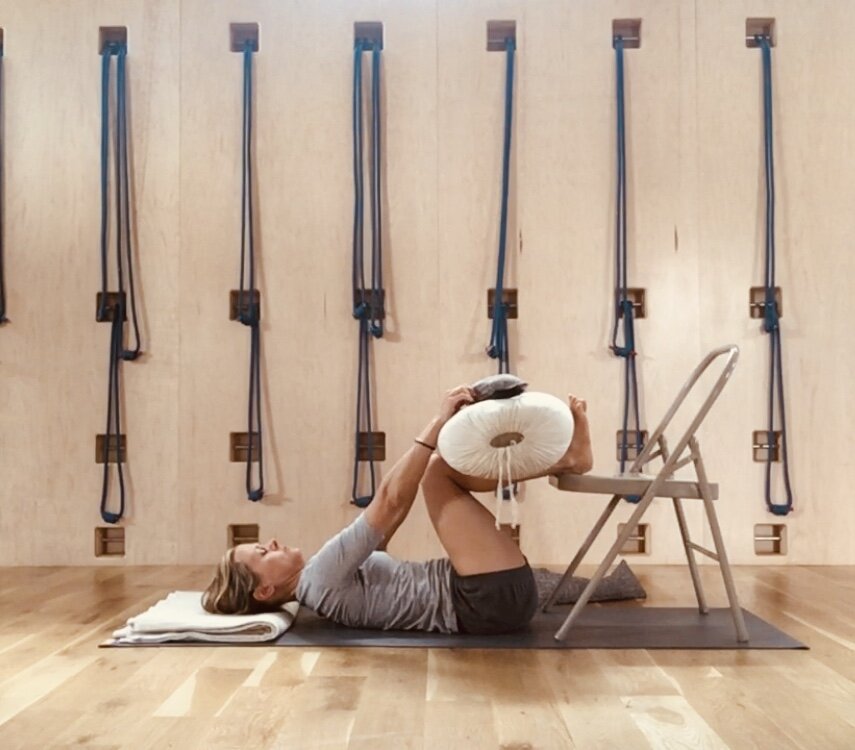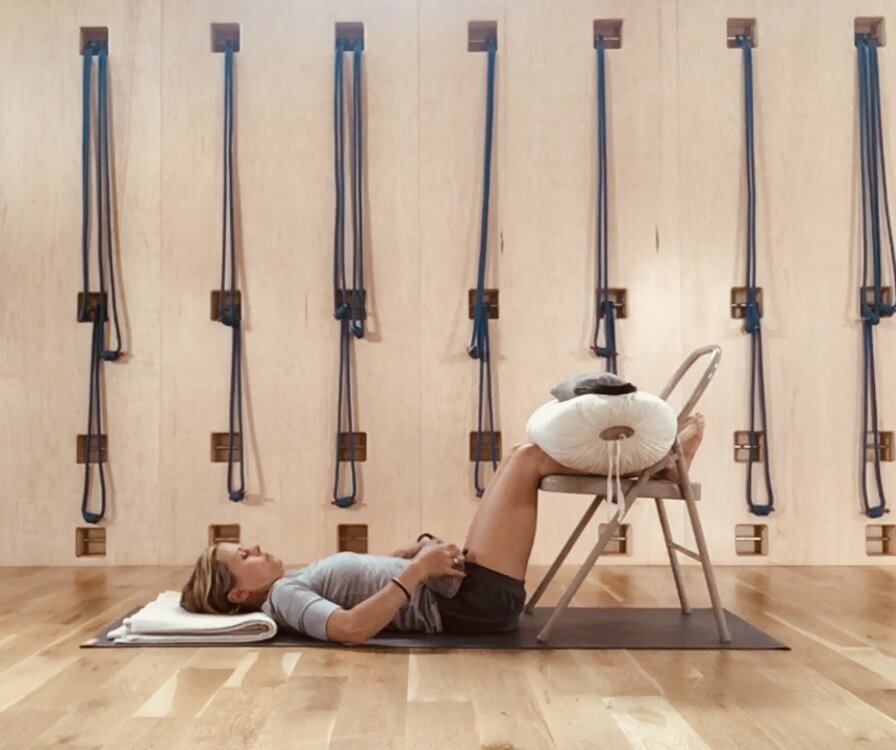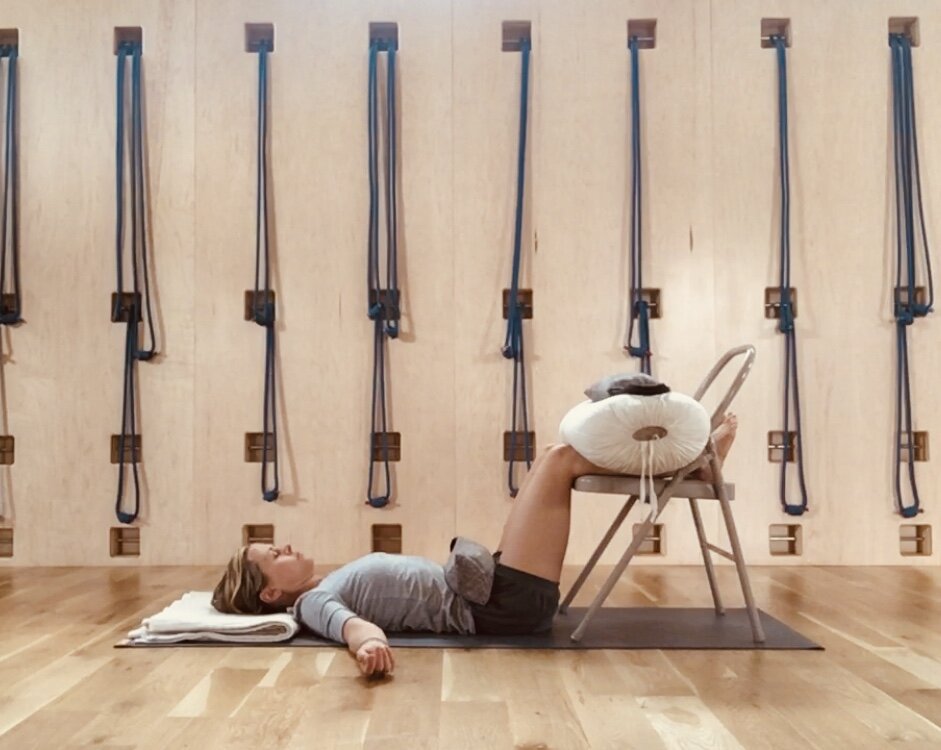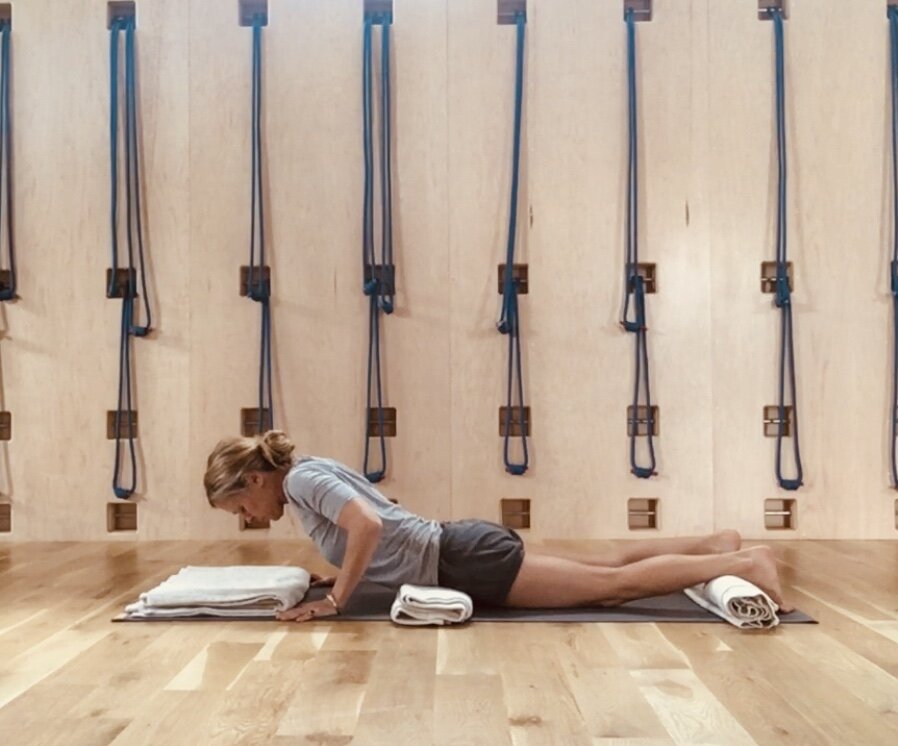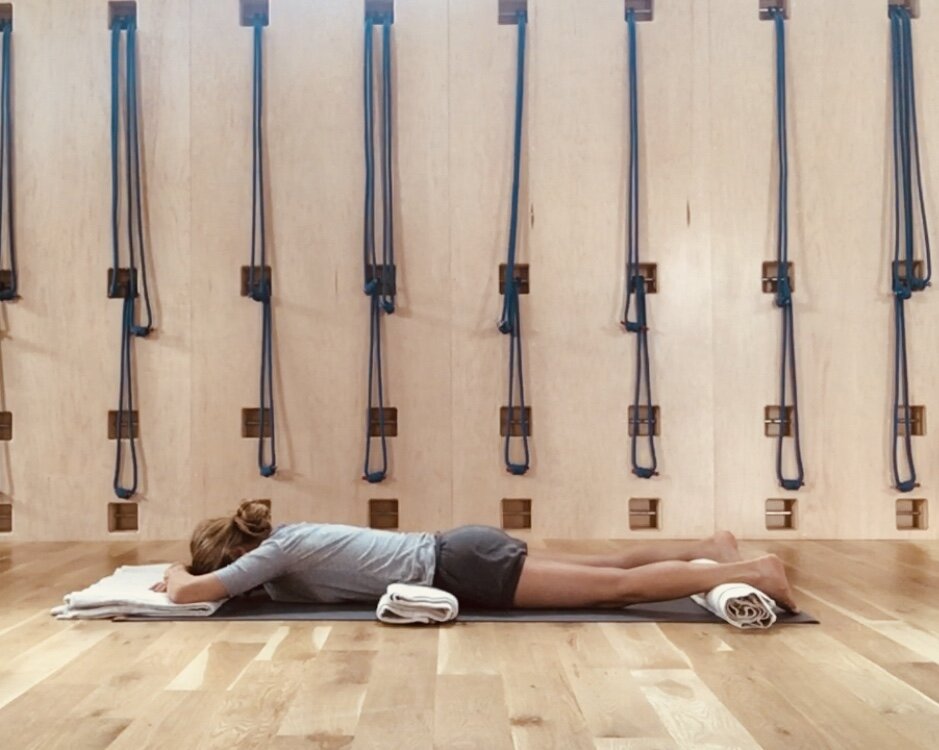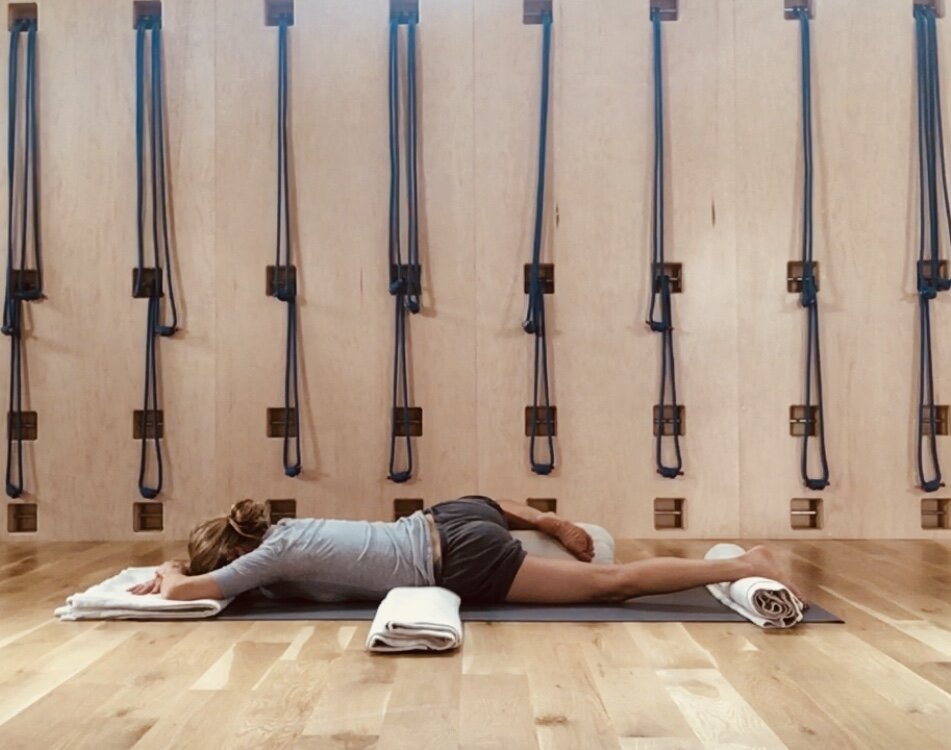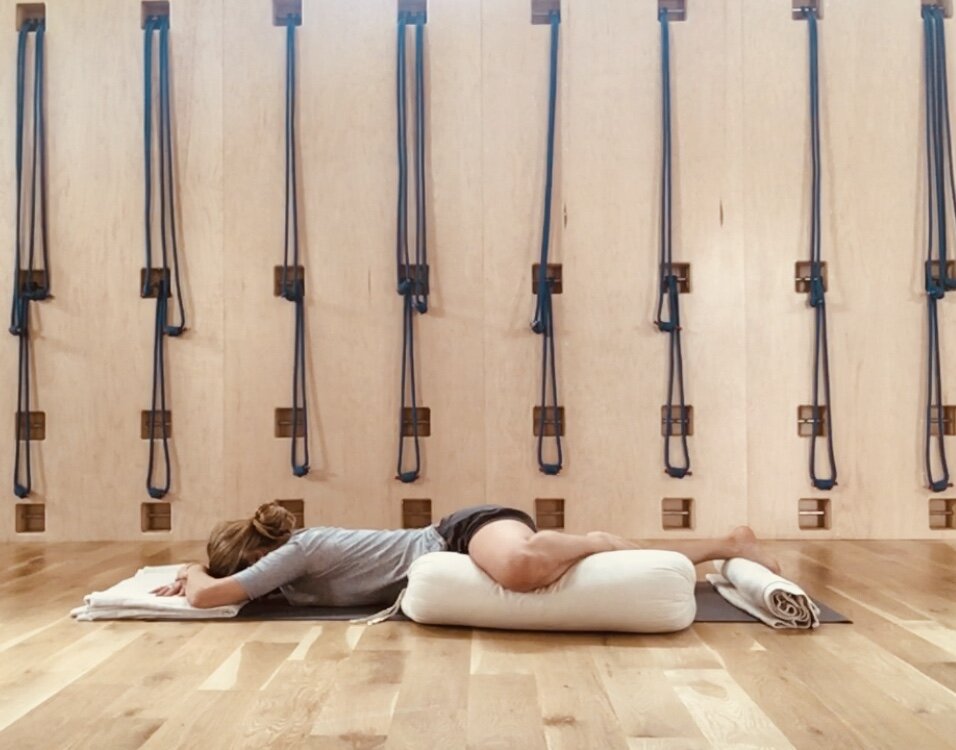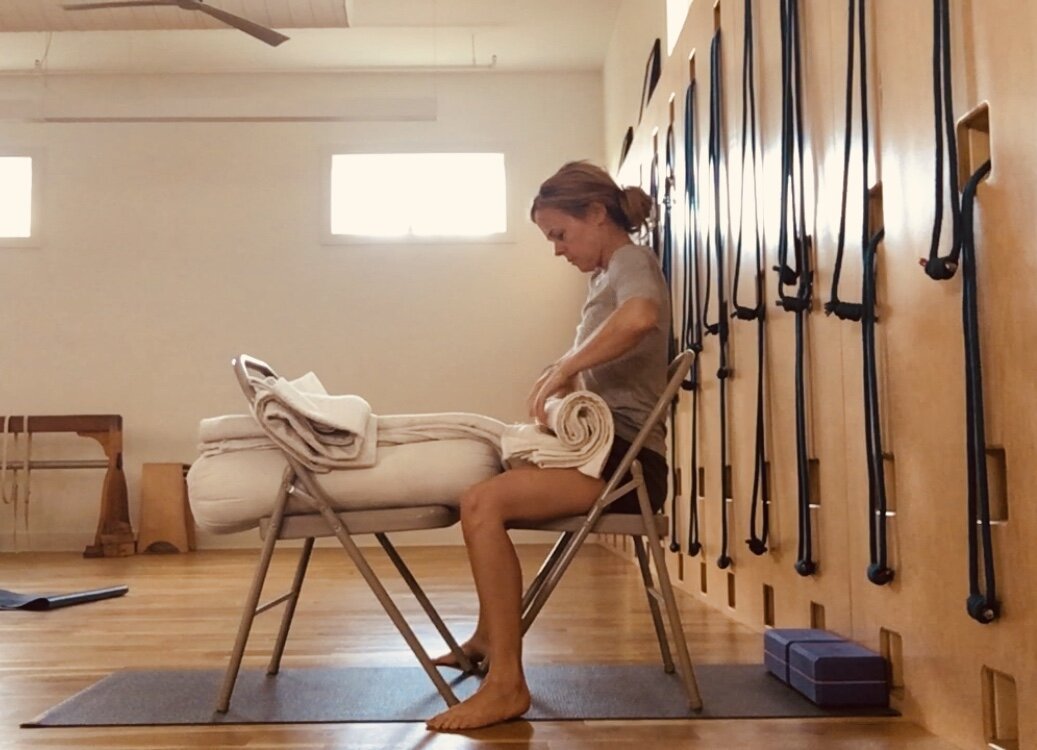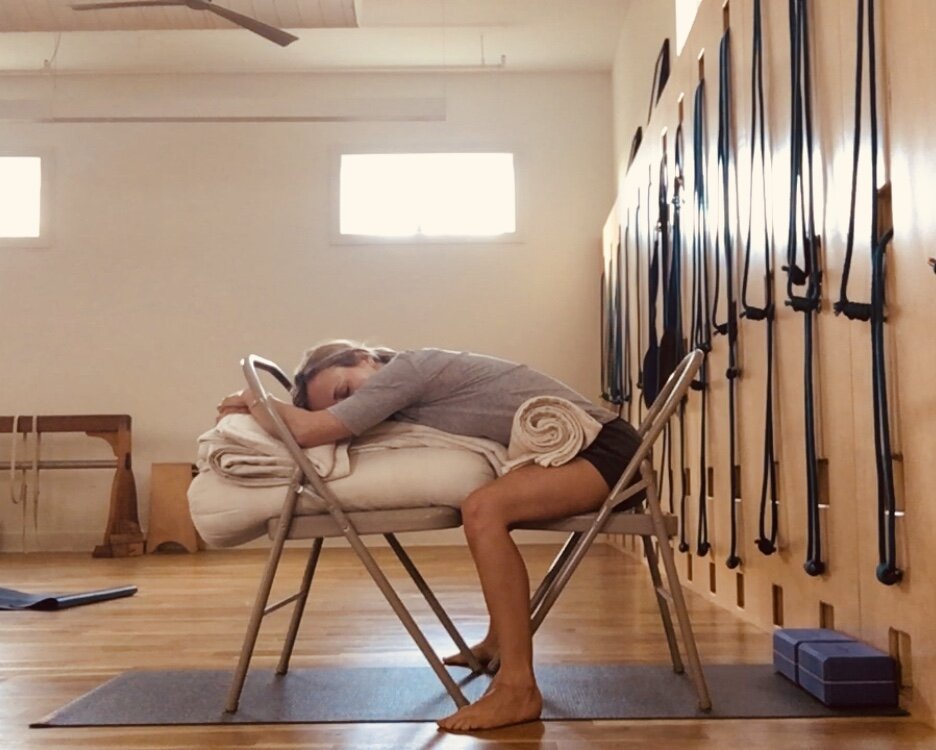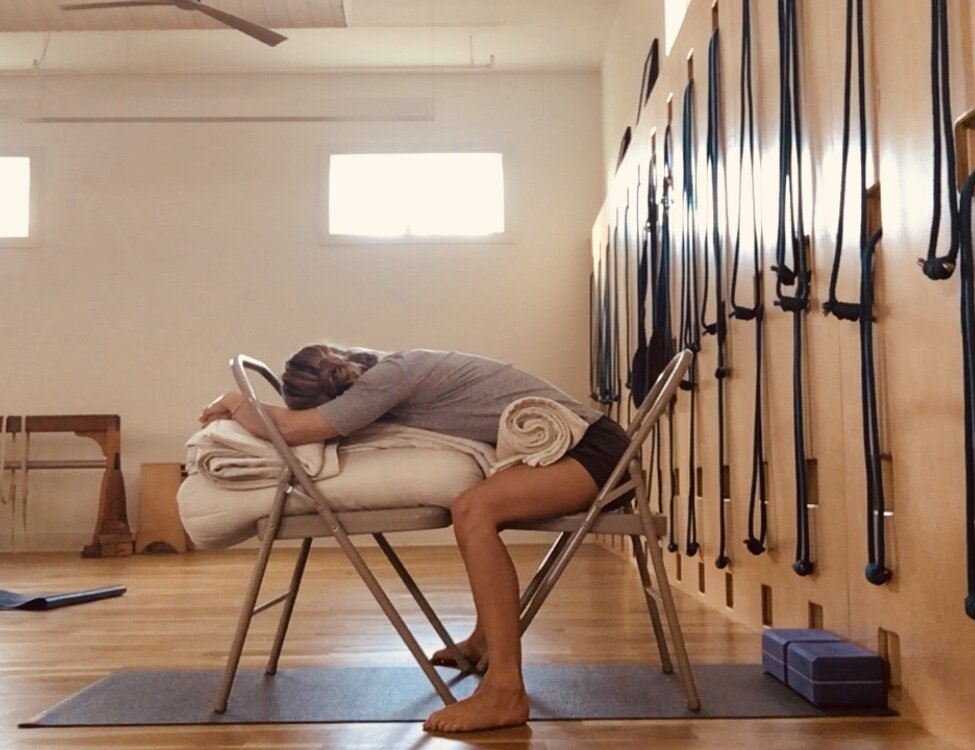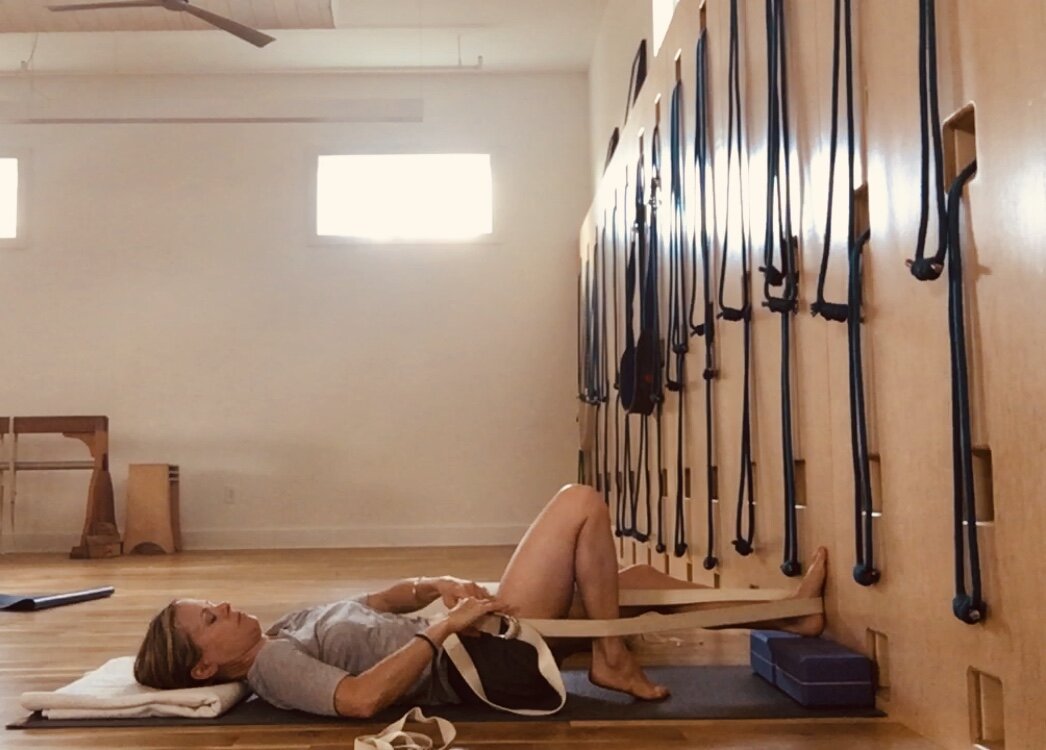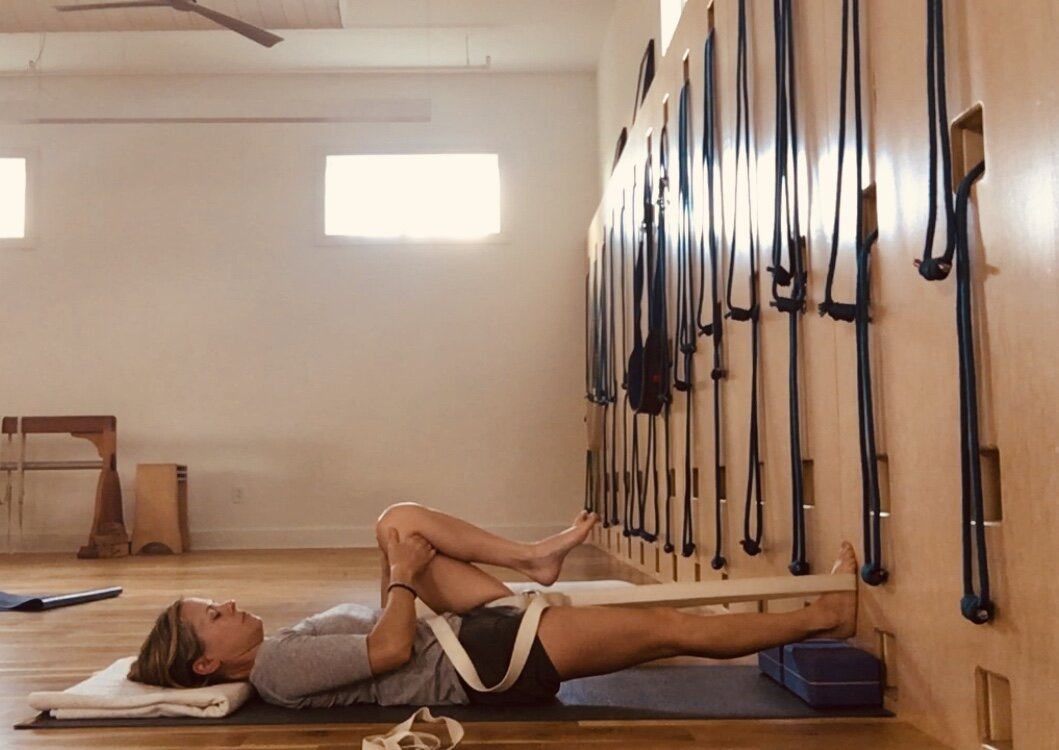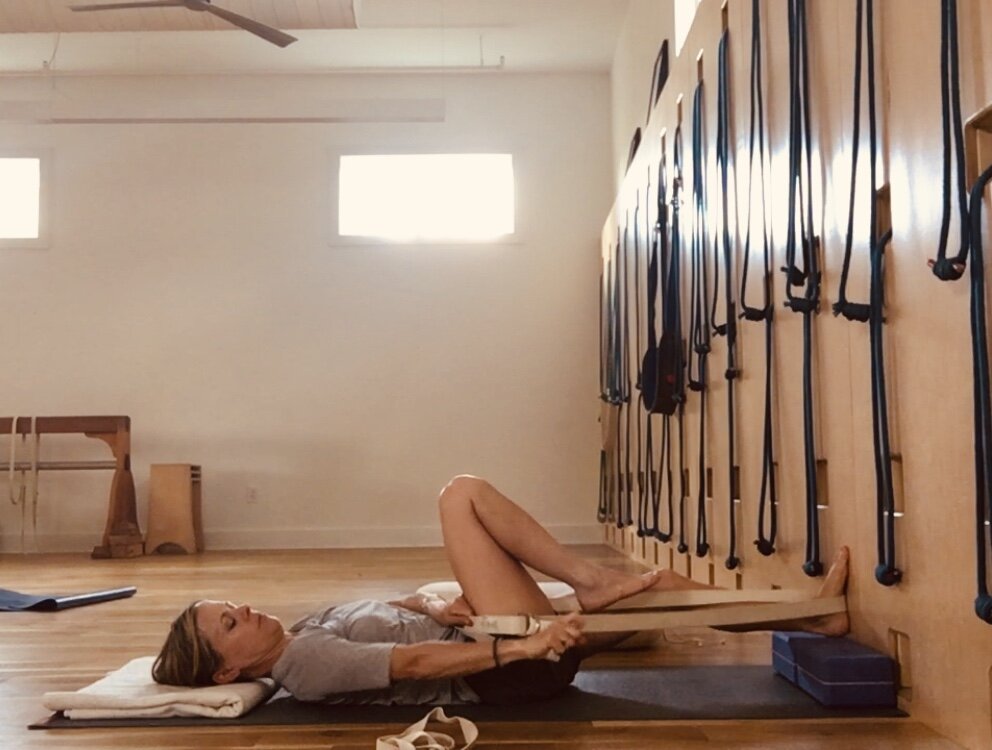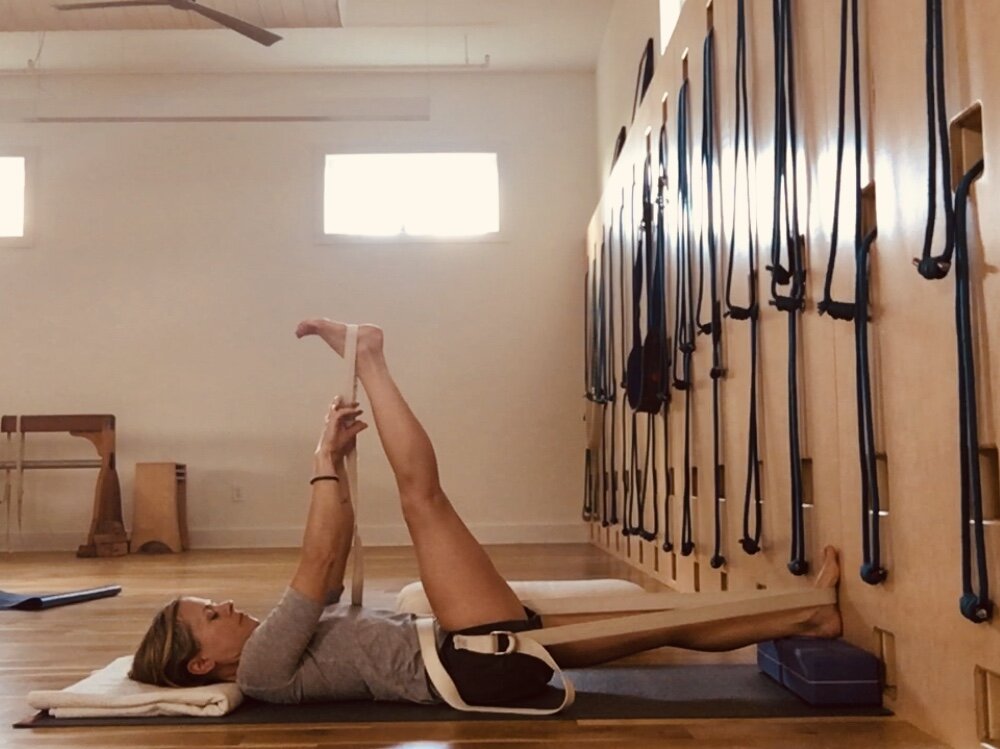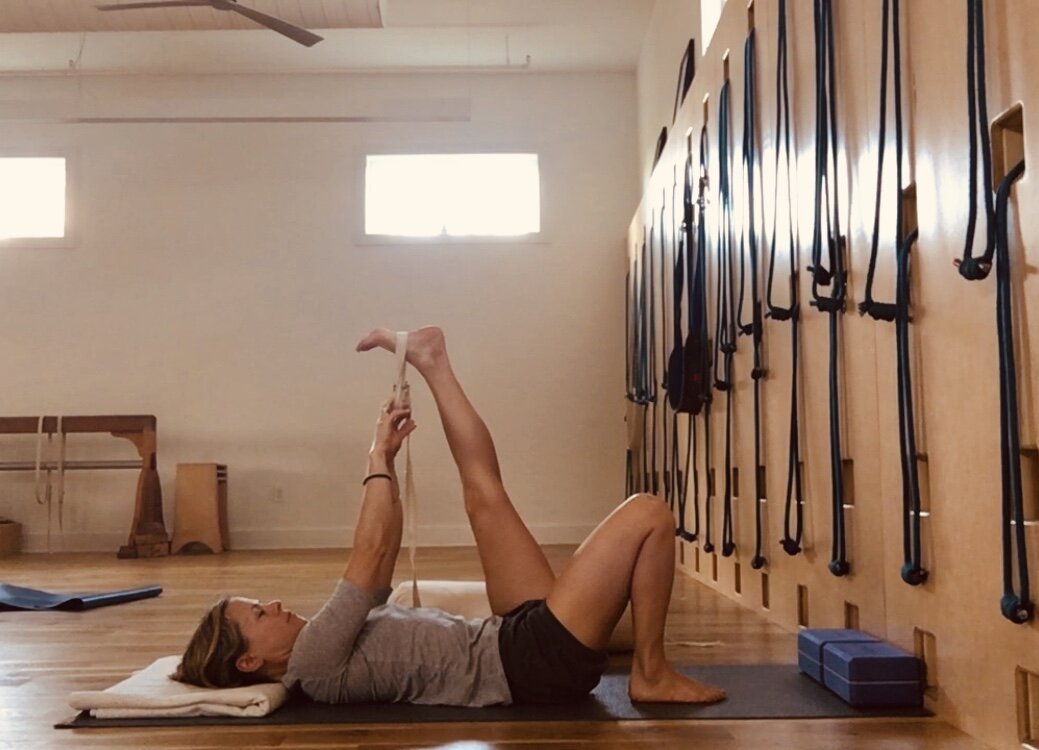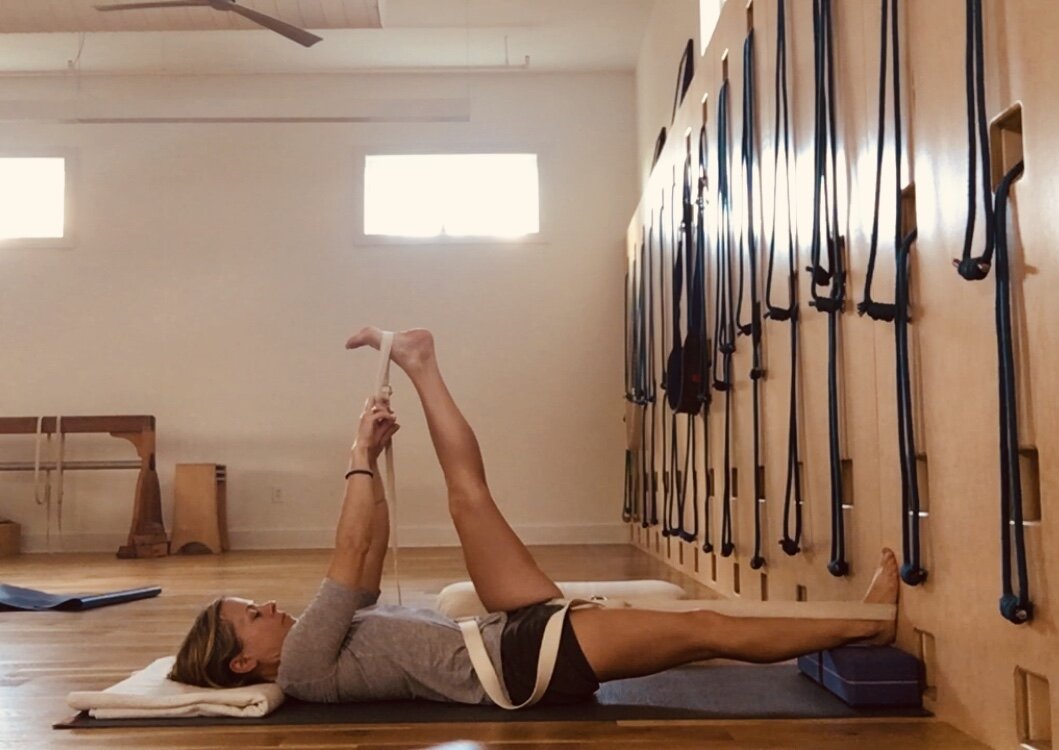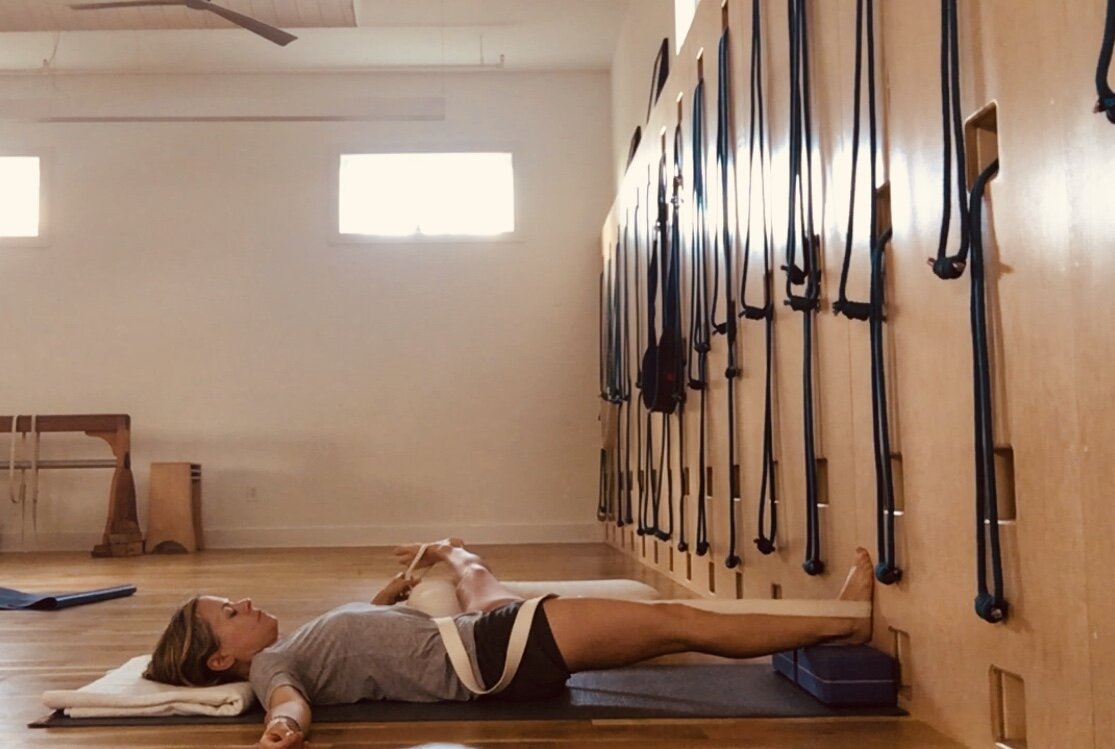Back Care Basics
Hey there, a handful of students have reached out with various back ache/pain questions (Elizabeth, Allison, and Helena I hope this helps!). It is not surprising during this time that the combination of fear and stress is manifesting in the body. Fear especially can wreak havoc on the lower back. While this is neither a complete nor thorough sequence, it does offer a few small ways to help rest and tend to your back if you have been experiencing back discomfort during this time. The pictures are not the best but will hopefully be able to guide you well enough. I am adding in simple instructions in the hopes of clarifying where the picture may be lacking. I am a one woman show at present at the studio so this is the best I could do. AND let me tell you, I am missing everyone! But we are all doing the right thing by staying in and I join all of you in supporting this effort. If we follow through and stay put, we will be helping our community and especially the most vulnerable among us. So chin up, we are doing our part and I am grateful.
I should add that these variations are ones that I have collected from studies with Stephanie Quirk, that are more robustly covered in the therapeutic manuals of Lois Steinberg (a MUCH more thorough and better resource than what I am offering here) and of course, all of this comes from the brilliant work of Guruji and Geeta Iyengar. Any mistakes are mine!
Chair Savasana (corpse pose with legs supported/weighted) 5-10min
*a quick note, as for how long to stay in each pose, suggested times are given but if you want to stay longer or shorter, you are more than welcome to adjust!
I am going to show a few options. First this is what you’ll need (hey Gil, the sandbags you have made us are AWESOME and so are you) if you don’t have sandbags made by Gil you can use a plate weight, or an iron skillet or a heavy art book:
Notice how I place a bolster on my shins, this will help pad the shin bone and also help disperse the weight you are setting on top of it more evenly on the shins
Here is how I place the weight (if you have someone that can place it for you that is IDEAL, but if you have to place it yourself, notice how I place my heels at the edge of the chair seat to bring the bolster close, from there I can place the weight and slide my heels back into place:
Another option here is to place a weight on the frontal hip bones/lower abdomen. This can feel soothing on the low back and can calm the lower spinal muscles:
Prone Savasana (prone corpse pose) 5min
This is a wonderful pose. I place a rolled blanket beneath my ankles, a trifold blanket under the lower abdomen and a folded blanket for the head. The blanket that is under the abdomen should help lift gently the contents of the abdomen up and to spread the lower back muscles and sacrum. If the fold is too much it will feel hard and not soothing. If it is too small, it will not help soften the lower back. You may have to fuss a bit to find the right amount of ‘loft’ for under the abdomen and the right placement. What you are looking for is for the lower back muscles to soften and spread. Here is the set up:
I start on all fours, placing my ankles on the roll, I keep my feet a minimum of hips width, they can be wider. From here, I adjust the blanket under the abdomen. After I do this I take time to lengthen my legs and roll the front thighs in (can’t really show that in a pic). Rolling the front of the thighs in will help spread the sacrum and lower back. From here I place the last blanket under the brow so my head can rest neutral.
Prone Akunchanasana (leg bent to the side) 3-5min each side
This variation can be wonderful for sciatica and pain in the low back. You’ll use all the props that you used in the last pose and add a bolster for the bent leg thigh and shin to rest on:
Two things that are important here, the bolster should support the entire bent leg. Get it as close to the inner top thigh as you can. Hook the thigh AND the shin on the bolster. The straight leg thigh should roll in as in the last variation. The angle of the photo is not the best but you can see the leg is fully supported. The abdomen should turn away from the bent leg to face the floor, you can use a small folded blanket still under the abdomen to keep lower back soft.
Adho Mukha Virasana (downward facing hero pose/ child’s pose- on chairs) 3-5min
You can also do from kneeling on the floor (not shown here but you can find in our first restorative sequence), but this variation sitting on a chair is much more soothing to the lower back. Here’s what you’ll need:
Straddle the chair you are sitting in with the legs apart. Pull the bolster as close to the pelvis as possible. You can add additional height on the bolster if the torso doesn’t rest easily down on the support. The blanket roll should support the lower abdomen as in Prone Savasana.
Supta Tadasana (reclined mountain pose) 2-3 minutes
Notice how I have the feet on bricks. This helps pacify the lower back by decreasing the lumbar curve:
Pavanmuktasana (knee to chest/wind relieving pose) stay a handful of breaths to each side
From Supta Tadasana, try simply bending one knee to the chest to help spread the sacrum and lower back on each side. When you bend the leg you create a small/light grip on the abdomen, reciprocally the posterior back muscles on each side are given a chance to lengthen and spread.
Pavanmuktasana with belt traction, this variation helps to release the femur down. It also creates more space in the hip socket and sacrum. See how I bend the leg and place the belt near to the hip at the top of the thigh. From here I tighten the belt until I can feel a mild traction as I bend my knee towards my chest. Don’t make the traction too tight or too loose:
Supta Padangusthasana I (reclined hand to big toe pose)
You can try this pose from Supta Tadasana (not shown) however if the hamstrings are very tight, you can bend the bottom leg (shown).
You can also try this variation with traction as you did in Pavanmuktasana
Supta Padangusthasana lateral (reclined hand to big toe with the leg to the side)
You can do as in Supta I, keeping the bottom leg bent and taking the lateral leg to the side with the support of a bolster:
you can also do this variation with traction as in v. 1. Starting in v. 1 I take the leg to the side and rest it on a bolster:
After you have finished these poses, return to a bent leg Savasana on a chair and rest for 5-10min
While this may not cure all your ails, it will hopefully give you a way to rest and renew your back.
Aum Peace Peace Peace
These sequences are free and open for the taking. If you are enjoying in these sequences and want to donate, you can donate on the link below. In gratitude.


